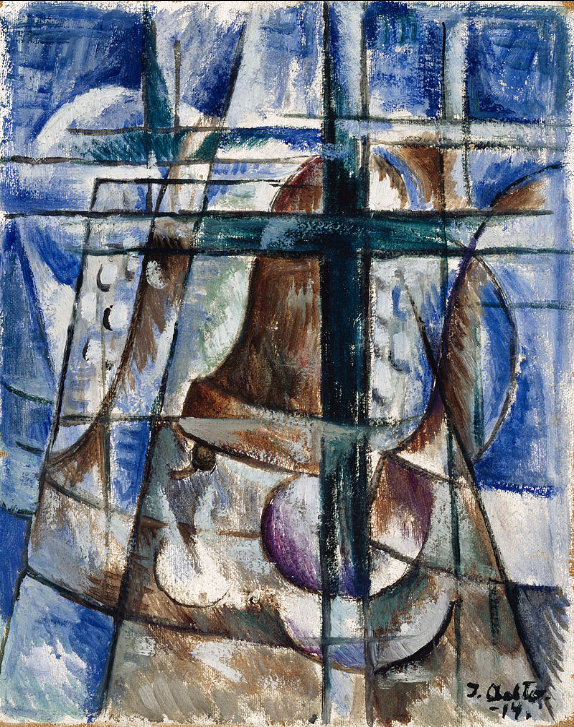Ilmari Aalto (August 7, 1891, Kuopio – September 29, 1934, Helsinki) was a Finnish painter and one of the country’s first cubists in the 1910s. He was a member of the November group, who grew up around the expressionist Tyko Sallinen. Aalto painted structural layouts, as well as landscape and portrait images. Aalto studied 1907-1908 at the National Academy of Fine Arts, the current Aalto University College of Art, Design and Architecture, and 1908-1911 at the Visual Arts Academy.
Aalto studied at the Central School of Arts and Crafts from 1907 to 1908 and the Finnish Art Society drawing school from 1908 to 1910.
Most of Aalto’s landscape paintings are views of Töölö and Suursaari. Aalto’s landscape painting is also shown Restaurant Eliel Brussels, Helsinki railway station. The rear wall of the landscape design of Eero Järnefelt and A. W. Finch were the most involved, but only three artist Ilmari Aalto dared to climb high ladders to take the painting.
Aalto started with Expressionism, but also discovered cubism in 1914. An Edvard Munch exhibition at the Ateneum soon after his graduation, had a strong influenced on Aalto and built on the expressionist influences; cubists and expressionists exhibition were seen in Finland in 1914, and were accompanied by key artists, among other things, the German Der Blaue Reiter.
After the 1920 trip to Paris, Aalto began to use more colors and strong brush strokes instead of the previous greyish palette. Later, while visiting Paris in 1928 he adopted a more realistic expression, clear contours and unmixed colors. Ilmari Aalto says that many works have been destroyed in self-critique.
“One of the best painters and spars of the time, as well as an independent and fearless critic. His dependence on Salma was not as great as why it was said. For example, he was brave enough not to get into the paws of Matisse. ”
Aalto died of liver cancer at the age of 43. Aalto’s spouse was Alli Helena Linnalahti (formerly Ketonen).
